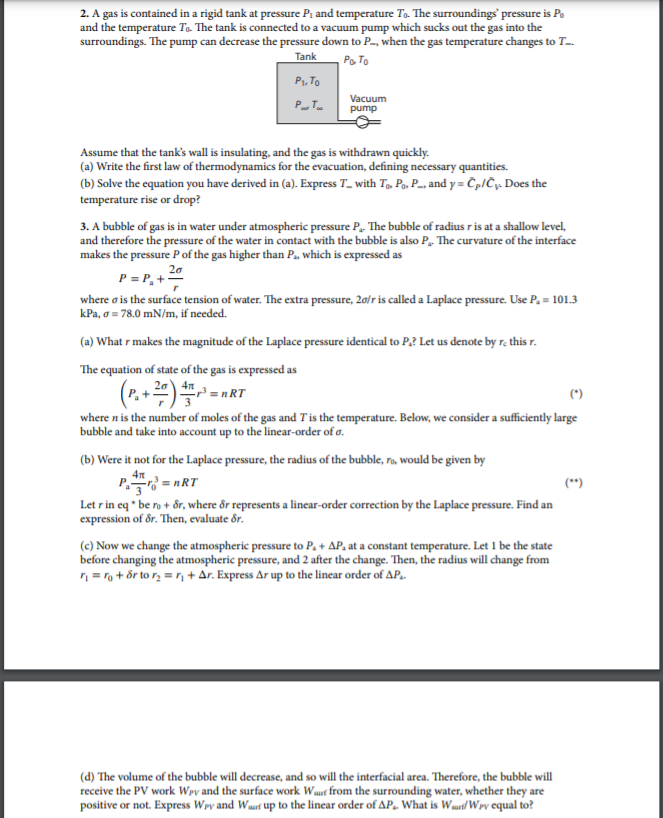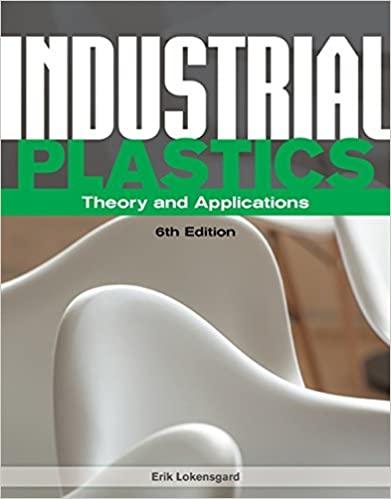
2. A gas is contained in a rigid tank at pressure P, and temperature To. The surroundings pressure is P. and the temperature To The tank is connected to a vacuum pump which sucks out the gas into the surroundings. The pump can decrease the pressure down to P., when the gas temperature changes to T.. Tank POTO P1,To Putu Vacuum pump Assume that the tank's wall is insulating, and the gas is withdrawn quickly. (a) Write the first law of thermodynamics for the evacuation, defining necessary quantities. (b) Solve the equation you have derived in (a). Express T_ with T., P. P., and y=Cp/C,. Does the temperature rise or drop? 3. A bubble of gas is in water under atmospheric pressure P. The bubble of radius ris at a shallow level, and therefore the pressure of the water in contact with the bubble is also P. The curvature of the interface makes the pressure Pof the gas higher than P., which is expressed as 20 P= P.+ where o is the surface tension of water. The extra pressure, 20/r is called a Laplace pressure. Use P. = 101.3 kPa, = 78.0 mN/m, if needed. (a) What r makes the magnitude of the Laplace pressure identical to P.? Let us denote by rethis r. The equation of state of the gas is expressed as (P.+29) Iv=nRT where n is the number of moles of the gas and Tis the temperature. Below, we consider a sufficiently large bubble and take into account up to the linear-order of o. (b) Were it not for the Laplace pressure, the radius of the bubble, ro, would be given by P =nRT (**) Letrin eq be re + 8r, where r represents a linear-order correction by the Laplace pressure. Find an expression of 8r. Then, evaluate 8r. (c) Now we change the atmospheric pressure to P. + AP, at a constant temperature. Let I be the state before changing the atmospheric pressure, and 2 after the change. Then, the radius will change from nr. +8r to r2 = 1 + Ar. Express Ar up to the linear order of AP.. 41 (d) The volume of the bubble will decrease, and so will the interfacial area. Therefore, the bubble will receive the PV work Wpy and the surface work out from the surrounding water, whether they are positive or not. Express Wpv and Wurf up to the linear order of AP. What is Wor/Wyv equal to







